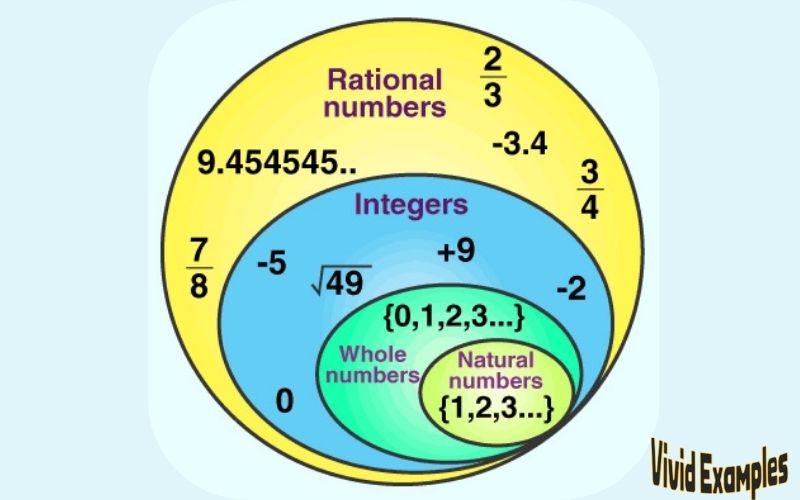Rational numbers are those number that can be expressed as the fraction of two integers (whole numbers), where the numerator is also an integer and the denominator is not zero. In simpler terms, it’s any number that can be written in the form a/b, where a and b are integers, and b is not equal to zero. Rational numbers include integers (like -3, 0, 7) and fractions (like 1/2, −3/4). They can be positive or negative and may have whole numbers or decimals in their fractional representation.
Importance of Rational Numbers
The importance of rational numbers lies in their ubiquity and practical applications across various fields. Here are some key reasons why rational numbers are significant:
Real-World Applications
- Rational numbers are extensively used in everyday situations, such as cooking measurements, financial transactions, and construction projects. They enable precise representation of quantities and measurements in practical scenarios.
Fractional Representation
- Rational numbers provide a convenient way to express fractions and portions of a whole. They are essential for representing quantities that are not whole numbers, allowing for accurate and flexible mathematical descriptions.
Mathematical Operations
- Rational numbers form the foundation for arithmetic operations. They are crucial for addition, subtraction, multiplication, and division, both in basic arithmetic and more advanced mathematical concepts.
Decimals and Percentages
- Rational numbers can be expressed as decimals or percentages. This versatility makes them valuable in various mathematical computations, especially in financial calculations and statistical analyses.
Solving Equations:
- Rational numbers play a key role in solving equations and inequalities. They provide solutions to a wide range of mathematical problems, serving as building blocks for algebraic expressions and equations.
Geometry and Measurement
- In geometry, rational numbers are used to represent lengths, areas, and volumes. They are essential for measuring and calculating geometric properties in a precise and systematic manner.
Computer Science
- Rational numbers are employed in computer science for representing and manipulating numerical data. Their use is integral to algorithms, data structures, and various computations performed in computer programming.
Scientific Research
- Rational numbers are fundamental in scientific research, particularly in physics, chemistry, and engineering. They facilitate accurate measurements, data analysis, and the formulation of scientific theories and models.
In essence, rational numbers are not only theoretical constructs but also practical tools that enable us to quantify, calculate, and solve problems in a wide range of disciplines. Their versatility and applicability make them a fundamental and indispensable part of mathematics and the real-world applications of mathematical concepts.
Examples of Rational number
Here are 50 examples of rational numbers:
Positive Integers
- 5 (5/1)
- 12 (12/1)
- 100 (100/1)
- 27 (27/1)
- 8 (8/1)
Negative Integers
- -3 (-3/1)
- -20 (-20/1)
- -7 (-7/1)
- -15 (-15/1)
- -1 (-1/1)
Zero
- 0 (0/1)
Proper Fractions
- 1/2
- 3/4
- 2/5
- 6/9
- 8/11
Improper Fractions
- 7/5
- 10/3
- 15/4
- 20/7
- 25/6
Mixed Numbers
- 2 1/3
- 4 5/6
- 1 2/5
- 8 3/4
- 6 7/8
Terminating Decimals
- 0.25 (1/4)
- 2.5 (5/2)
- 0.6 (3/5)
- 3.75 (15/4)
- 1.2 (6/5)
Repeating Decimals
- 0.333… (1/3)
- 1.414… (√2)
- 0.1818… (2/11)
- 0.909… (1/11)
- 2.545… (23/9)
Square Roots Resulting in Integers
- √4 = 2
- √9 = 3
- √16 = 4
- √25 = 5
- √36 = 6
Square Roots Resulting in Fractions:
- √1/4 = 1/2
- √9/16 = 3/4
- √25/9 = 5/3
- √36/49 = 6/7
- √81/100 = 9/10
I hope these examples find you well. Subscribe to our newsletter for regular updates.

